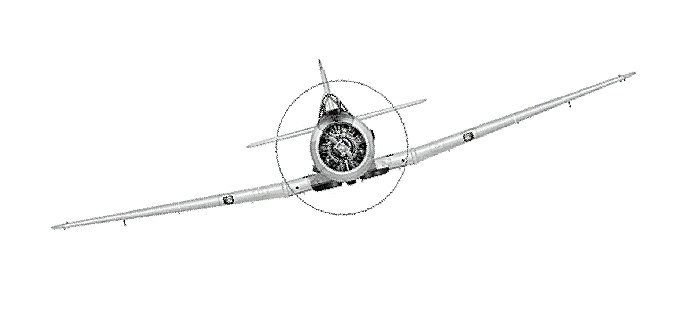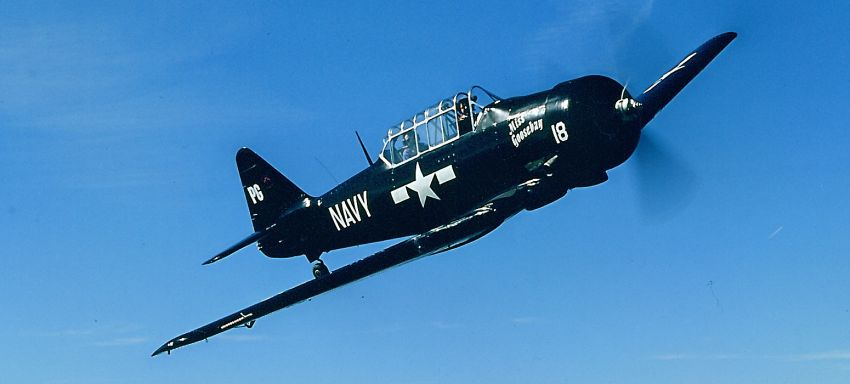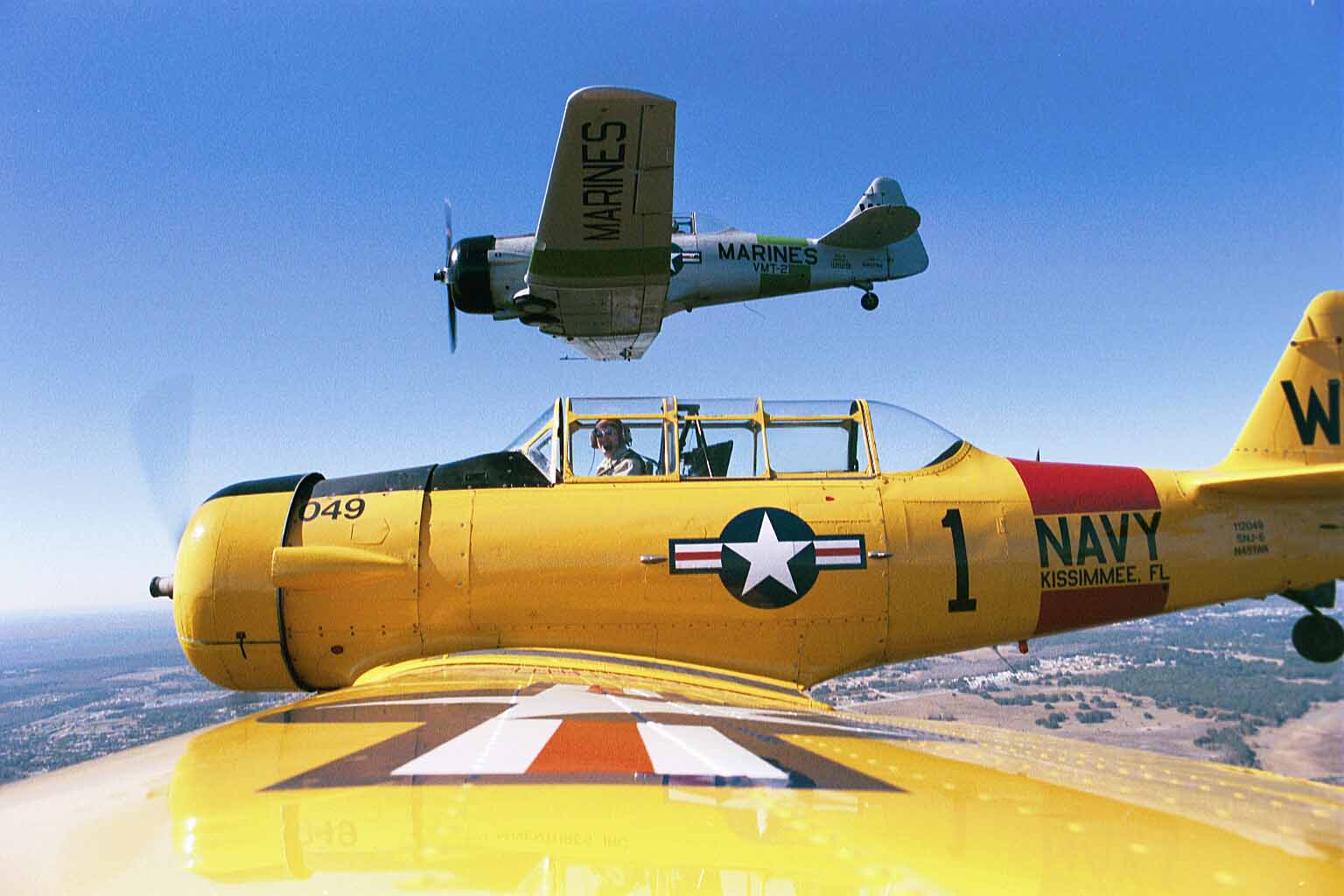|
||||||||||||||||||||
| North American T-6/SNJ/Harvard | ||||||||||||||||||||
| AIRCRAFT DESCRIPTION | ||||||||||||||||||||
The T-6, one of the most popular warbird aircraft today, is an outstanding single engine trainer that has been used by air forces of over 30 countries. It is an excellent aircraft for anyone transitioning to a high horsepower tailwheel fighter. Click on
Click on
|
||||||||||||||||||||
| BASIC SPECIFICATIONS | ||||||||||||||||||||
|
||||||||||||||||||||
| PERFORMANCE | ||||||||||||||||||||
| Normal cruise speed is 155 MPH (30 US GPH) at 8000'. The aircraft is stressed for aerobatics and is capable of most maneuvers with the exception of sustained inverted flight, snap rolls, outside loops, and inverted spins. | ||||||||||||||||||||
| MODEL DIFFERENCES | ||||||||||||||||||||
| The T-6/SNJ/Harvard aircraft have been produced in a number of model designations. Most of the changes are small and do not affect today’s warbird operator. The following section is devoted to discussing the most common differences. | ||||||||||||||||||||
| Fuel Capacity- The T-6 has 110 US gallons on all models except the T-6G and Harvard MK IV, which have 140 gallons. With a cruise fuel burn of 30 GPH, 110 gallons is adequate for most operators. | ||||||||||||||||||||
| Tail wheel steering/locking systems- The Navy type is lockable only. The pilot is able to lock the tailwheel to a straight-ahead position for take off and landing. Steering is accomplished by differential braking. The steerable type system (also called P-51 type) uses an interconnect from the rudder pedals to the tailwheel steering system. This system allows the pilot to steer the aircraft by use of the rudder pedals. Full forward stick movement unlocks this system. When unlocked the tailwheel becomes full swivel and steering is again by differential braking. | ||||||||||||||||||||
| Hydraulic system- The original system incorporated a pilot controlled bypass. In order to use the gear or flaps, a small button must first be pushed before activation of the system. This button pressurizes the system and a time delay circuit depressurizes the system after approximately 45 seconds. Later aircraft (TG-G/Harvard MK-4) had a modified linkage that engaged the system automatically. For practical purposes, either system is satisfactory. There are several variations in other areas such as instrument panel layout and cockpit glass. Many aircraft have been modified to incorporate various combinations of the above systems. For the most part, any of these systems work well for the civilian operator. | ||||||||||||||||||||
| WHAT TO LOOK FOR IN A T-6 SERIES AIRCRAFT | ||||||||||||||||||||
| For the average civilian operator, the exact model should not be as big a concern as finding a good clean aircraft at the investment level desired. Most of these aircraft have been in civilian ownership for a number years; therefore, they have been well taken care of. A pre-purchase inspection by a qualified shop is always a good idea. General condition and lack of major corrosion are important. Since these aircraft were designed as trainers they may have had some damage in their lifetimes. If the damage was repaired and the appropriate parts were replaced, the damage history of the aircraft will not be a major issue. The level of restoration is a big variable and greatly affects the price of the aircraft. | ||||||||||||||||||||
| COST OF OPERATION & MAINTENANCE | ||||||||||||||||||||
|
||||||||||||||||||||
| These aircraft consist of simple electric and hydraulic systems and can be maintained very easily by most general aviation shops. There is no special test equipment required that is different from normal civilian aircraft. Parts are readily available from several sources - particularly from the US. Most aircraft in good condition can be inspected for £2000 or less. | ||||||||||||||||||||
| AD’S AND OTHER SERVICE INFORMATION- There are several one time AD’s to be done as part of the original certification. Other AD’s include AD 50-38-1, which calls for inspection at each annual for corrosion of the airframe. A normal Annual Inspection will cover this. | ||||||||||||||||||||
| AD 2005-12-51 calls for
an inspection of upper and lower wing attach angles. After initial inspection, this will
be done each 200 hours. A revision is expected in 2006 that will extend the recurring
inspection times. |
||||||||||||||||||||
| AD 81-14-10 calls for inspection of the tail-attach fittings for cracks. This can be done at every annual inspection or the fitting can be replaced with a newer style, which will eliminate the repetitive inspections. Most aircraft have the newer style fittings installed. | ||||||||||||||||||||
| AD 99-11-2 for the Pratt &Whitney R-1340 engine calls for an inspection for cylinder head cracks. This again would be done at annual. There is also an AD on R-1340 crankshafts made by Air Tractor and installed in certain engines at overhaul. | ||||||||||||||||||||
| CERTIFICATION BASIS | ||||||||||||||||||||
The American built aircraft are certified in the Standard Category in the USA. The Harvard MK-IV aircraft built in Canada by Canadian Car and Foundry are certified in the Experimental-Exhibition Category. Some early Harvard MK-II’s were built in the US and can be certified in the Standard Category. In the UK the Harvard is classed by EASA as an 'Annex B' aircraft. If 'G' registered, it is therefore subject to an annual permit from the UK CAA. |
||||||||||||||||||||
| REFERENCE MATERIAL | ||||||||||||||||||||
| There have been a number of books written about the T-6/SNJ/Harvard aircraft that will give more detailed information on the aircraft. Some recommended sources are: | ||||||||||||||||||||
| "T-6 Texan in Action,"
Squadron/Signal Publications #94 "The incredible T-6 Pilot Maker," Walt Ohlrich and Jeff Ethell, Speciality Press "T-6 Texan-The Immortal Pilot Trainer," William Jesse, Osprey Aerospace-England "AT-6/Harvard," Len Morgan, Arco Famous Aircraft series. "Harvard-The North American Trainers in Canada," David Fletcher and Doug MacPhail, DCF Books-Canada "Story of the Texan AT-6," Aviation Publications "Warbird Tech Series American NA16/AT-6/SNJ," Dan Hagerdorn, Specialty Press NATA - North American Trainer Association www.northamericantrainer.org |
||||||||||||||||||||
| These and other books are available from amazon.com. | ||||||||||||||||||||





